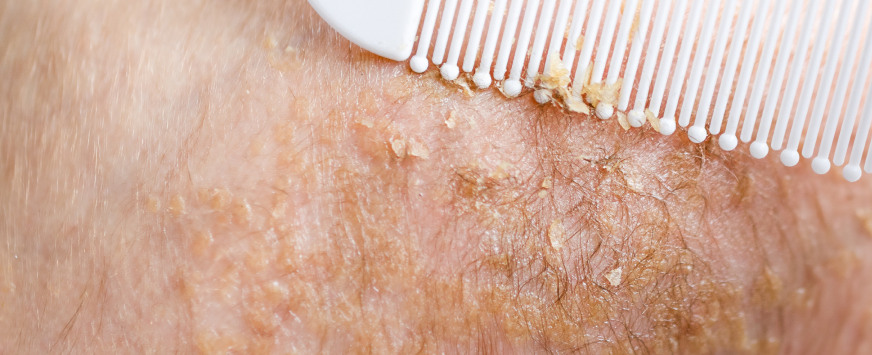Cradle cap, medically known as infantile seborrheic dermatitis, is a common condition in babies, typically appearing within the first few months of life. It presents as scaly, crusty, yellowish patches on the baby’s scalp. While it can look concerning to parents, cradle cap is generally harmless and usually resolves on its own within a child’s first year.
CRADLE CAP
Treatment
Gentle
Brushing
After a bath, while the baby’s hair is still wet, use a soft brush to gently scrub the scalp in a circular motion. This can help loosen and remove scales.
Hydrocortisone
Cream
If inflammation or itching seems severe, a pediatrician might recommend a mild hydrocortisone cream. It’s essential to use it sparingly and under a doctor’s instructions.
Medicated
Shampoo
For persistent cases, over-the-counter shampoos designed for seborrheic dermatitis or dandruff (such as those containing selenium sulfide or ketoconazole) can be beneficial. However, they should be Cradle cap used under pediatrician guidance and not be used frequently.
Oil
Treatment
Some parents find it helpful to apply a small amount of natural oil (like almond or coconut oil) to the baby’s scalp, letting it sit for a few minutes to an hour before gently combing or brushing it out. Make sure to shampoo afterward to remove oil residues, as leaving it on might worsen the condition.
Mild
Shampoo
Use a mild baby shampoo during baths, ensuring you rinse thoroughly.
Recommendations
Avoid
Scratching
While it may be tempting, don’t pick at the scales, as it can cause irritation or introduce infection.
Limit
Bath Time
Don’t bathe the baby too often, as over-washing can strip the skin of essential oils, worsening cradle cap.
Keep the
Scalp Dry
Make sure the baby’s head is dry after baths or sweating, as moisture can exacerbate the condition.
Rotate
Shampoos
If you’re using medicated shampoos, rotate them with mild baby shampoos to avoid potential skin irritation.
Natural
Fibers
Dress your baby in natural fibers, like cotton, which allow the skin to breathe and help prevent excessive sweating that could exacerbate the condition.
Consultation
If the cradle cap spreads, becomes inflamed, looks red or swollen, seems itchy to the baby, or doesn’t improve with treatments, it’s essential to consult a pediatric dermatologist.
Monitor
Other Areas
While cradle cap primarily affects the scalp, it can also appear on the baby’s face, ears, and diaper area. Use gentle cleansers and moisturizers in these areas.
Remember, while cradle cap might not look pleasant, it’s usually not bothersome to the baby. Most children outgrow it by their first birthday. Regular gentle care and patience are often all that’s needed.



